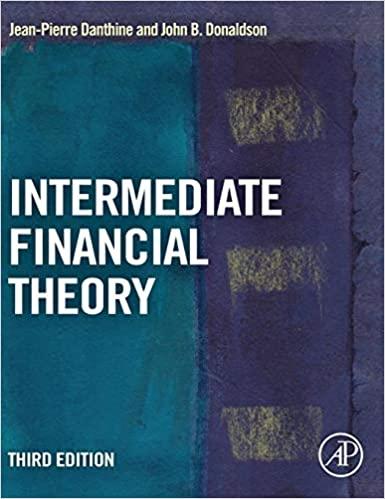Question
Part Three (28 marks) 1. ABA Corp, maker of sports accessories, is considering investing in a new project that manufactures squash racquets. You have received
Part Three (28 marks) 1. ABA Corp, maker of sports accessories, is considering investing in a new project that manufactures squash racquets. You have received the following information relating to the project: The project will run for four years; Annual sales are expected to be $20 million in the first year, and will grow at a rate of 8% until the end of the life of the project; Manufacturing costs and operating expenses are expected to be $12 million and $4 million per year, respectively; There will be upfront marketing and R&D expenses of $5 million; Initial equipment costs of $8 million. The equipment will be depreciated via the straight-line method to a book value of zero. However, at the end of the project, they will receive $500,000 for the equipment; ABAs debt cost of capital is 7%, and the cost of equity capital is 12%; and, ABA Corp pays a corporate tax rate of 35%. Assume all cash flow occurs at the end of year In addition, you have been told that no net working capital is required for the project. Assume that the project has the same risk as the firm. ABA Corporation has $30 million in cash, $300 million in equity, and $330 million in debt. ***The solution of the question includes the calculation of net debt (=debtcash), which is then used to calculate D/V ratio. This is not covered in this course and thus not examinable. a) Calculate the projected free cash flows of the new project for each year. (5 marks) b) Assuming ABA Corporation wishes to constantly maintain a target leverage ratio; calculate the weighted average cost of capital. (3 marks) c) Calculate the levered value of the project. (3 marks) d) What is the debt capacity of the project for each year? (4 marks) e) What is the interest amount paid at the end of each year? (4 marks) f) What is the free cash flow to equity for each year? (5 marks) g) Calculate the projects NPV using flow-to-equity method and explain whether the company should proceed with the project or not? (4 marks)
Step by Step Solution
There are 3 Steps involved in it
Step: 1

Get Instant Access to Expert-Tailored Solutions
See step-by-step solutions with expert insights and AI powered tools for academic success
Step: 2

Step: 3

Ace Your Homework with AI
Get the answers you need in no time with our AI-driven, step-by-step assistance
Get Started


